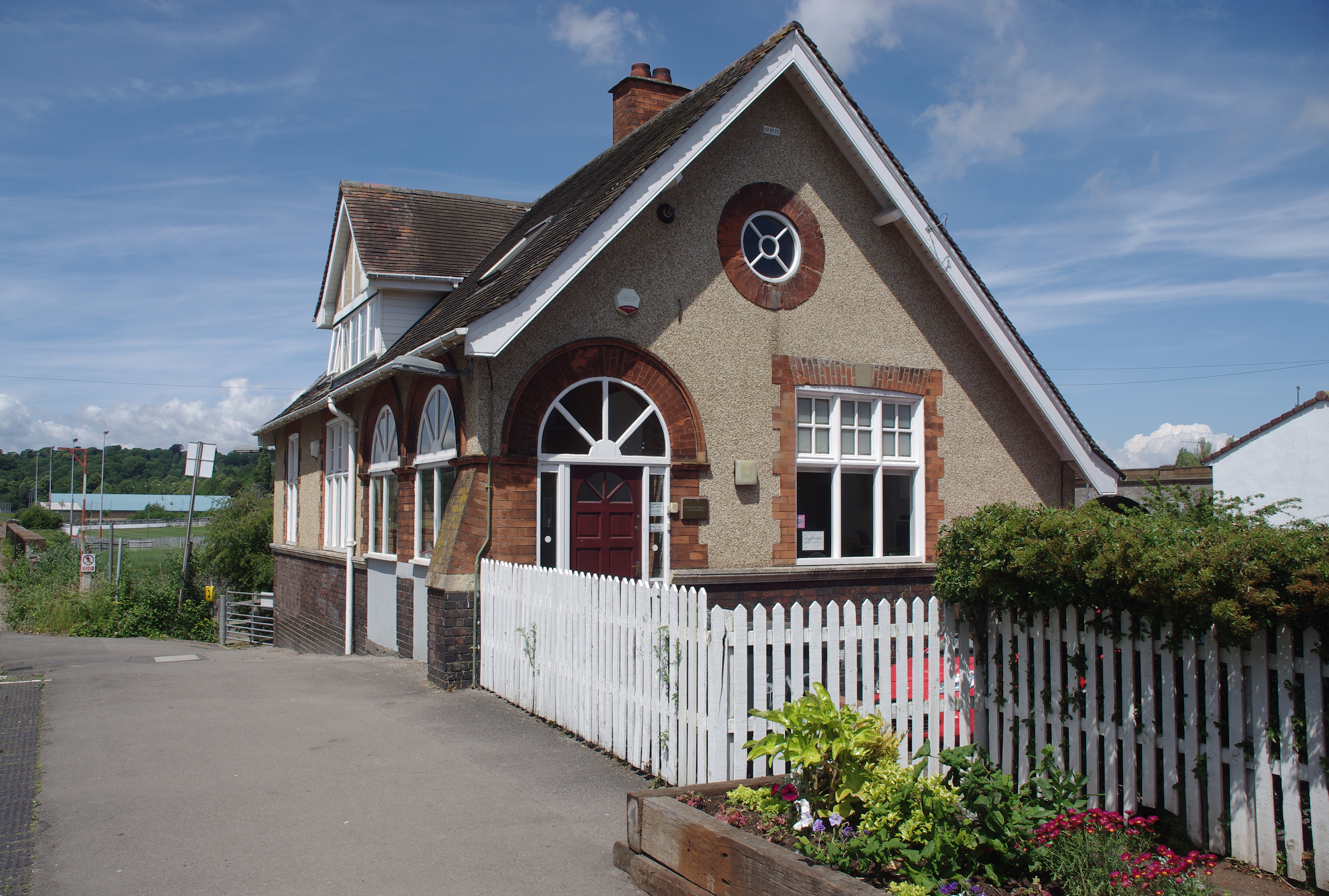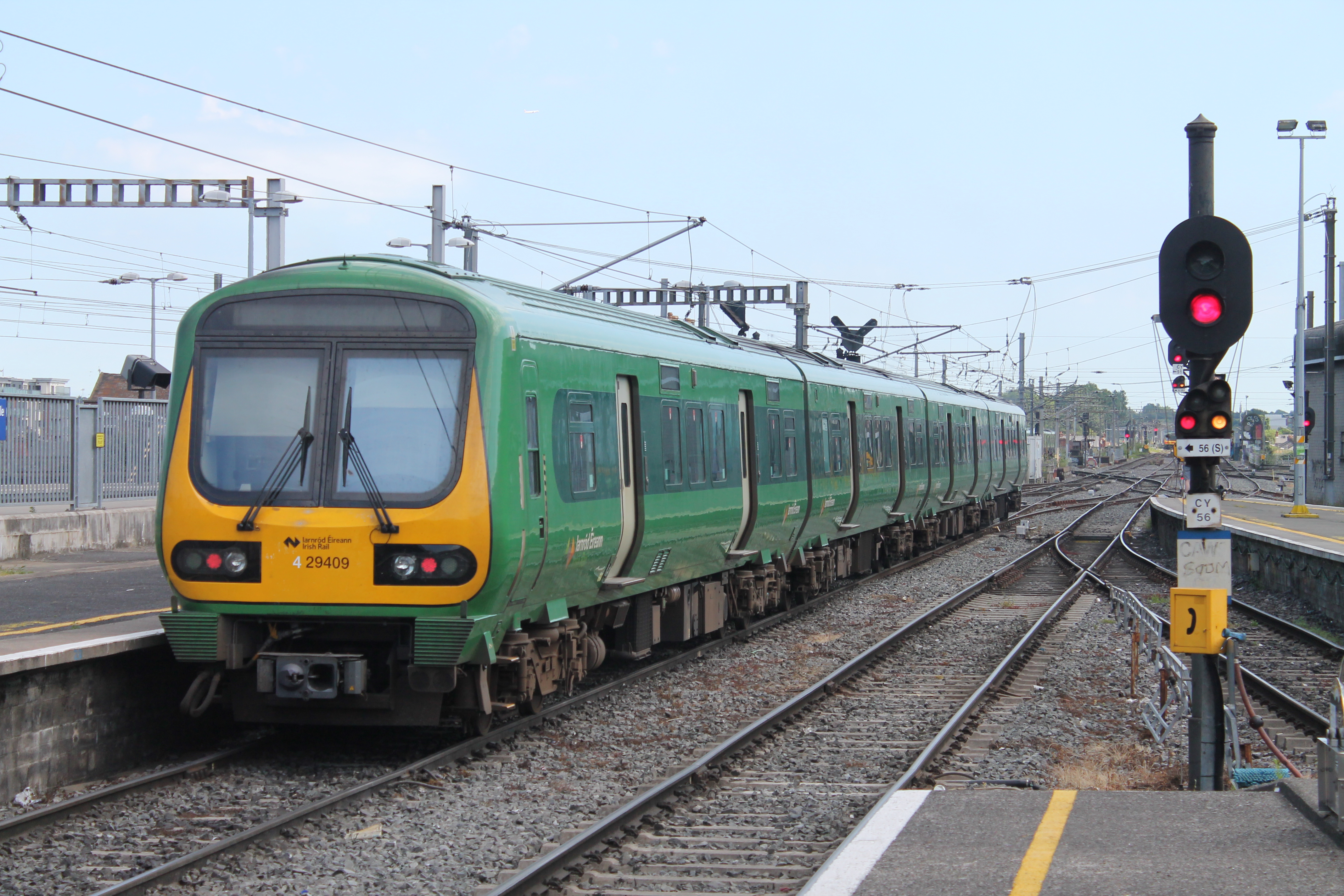|
Sea Mills Railway Station
Sea Mills railway station is on the Severn Beach Line and serves the district of Sea Mills and nearby Westbury on Trym in Bristol, England. It is from , situated at the confluence of the River Avon and River Trym and near the A4 Bristol Portway. Its three letter station code is SML. The station has a single platform which serves trains in both directions. it is managed by Great Western Railway, which is the third franchise to be responsible for the station since privatisation in 1997. They provide all train services at the station, mainly a train every 30 minutes in each direction. The station was opened in 1865 by the Bristol Port Railway and Pier, and had a single platform. It later became part of the Clifton Extension Railway, and had a second platform built. The station was expanded over the years, and at one point had four porters staffing it. However the Severn Beach Line declined over the latter half of the twentieth century and by the 1970s the station had no ... [...More Info...] [...Related Items...] OR: [Wikipedia] [Google] [Baidu] |
Sea Mills, Bristol
Sea Mills is a suburb of the English port city of Bristol. It is situated north-west of the city centre, towards the seaward end of the Avon Gorge, lying between the former villages of Shirehampton to the west and Westbury-on-Trym and Stoke Bishop to the east, at the mouth of the River Trym where it joins the River Avon. Sea Mills previously was part of the city ward of Kingsweston. Following a Local Government Boundary Commission review in 2015 ward boundaries were redrawn and Sea Mills is now split between the Stoke Bishop ward and the Avonmouth and Lawrence Weston ward. History Pre 20th century Sea Mills was the site of a Roman settlement, known as Portus Abonae. Its origin may have been as a military settlement but by the early second century, a civilian town had been established. It was important enough to feature in the 3rd-century Antonine Itinerary which documents towns and distances in the Roman empire, and was connected to Bath by a road. Archaeological excav ... [...More Info...] [...Related Items...] OR: [Wikipedia] [Google] [Baidu] |
Ian Allan Publishing
Ian Allan Publishing was an English publisher, established in 1942, which specialised in transport books. It was founded by Ian Allan. In 1942 Ian Allan, then working in the public relations department for the Southern Railway at Waterloo station, decided he could deal with many of the requests he received about rolling stock by collecting the information into a book. The result was his first book, ''ABC of Southern Locomotives''. This proved to be a success, contributing to the emergence of trainspotting as a popular hobby in the UK, and leading to the formation of the company.Ian Allan…the man who launched a million locospotters ''The Railway Magazine'' issue 1174 February 1999 pages 20-27 The company grew from a small producer of books for train enthusiasts and spotters to a large transport publisher. Each year it published books covering subjects such as military and civil aviation, naval and maritime topics, buses, trams, trolleybuses and steam railways, including h ... [...More Info...] [...Related Items...] OR: [Wikipedia] [Google] [Baidu] |
Sheffield
Sheffield is a city in South Yorkshire, England, whose name derives from the River Sheaf which runs through it. The city serves as the administrative centre of the City of Sheffield. It is historically part of the West Riding of Yorkshire and some of its southern suburbs were transferred from Derbyshire to the city council. It is the largest settlement in South Yorkshire. The city is in the eastern foothills of the Pennines and the valleys of the River Don with its four tributaries: the Loxley, the Porter Brook, the Rivelin and the Sheaf. Sixty-one per cent of Sheffield's entire area is green space and a third of the city lies within the Peak District national park. There are more than 250 parks, woodlands and gardens in the city, which is estimated to contain around 4.5 million trees. The city is south of Leeds, east of Manchester, and north of Nottingham. Sheffield played a crucial role in the Industrial Revolution, with many significant inventions an ... [...More Info...] [...Related Items...] OR: [Wikipedia] [Google] [Baidu] |
Today's Railways UK
''Today's Railways UK'' is an English-based monthly magazine covering rail transport in Great Britain. It was founded by Platform 5 in January 2002 as ''Entrain'' as a sister publication to '' Today's Railways Europe'', in January 2006 it was rebranded as ''Today's Railways UK''. The magazine was set up by Peter Fox, who wrote a monthly "Grumpy Old Man" Column. It is owned by Platform 5 publications. Fox was editor-in-chief of the magazine until his death in 2011. Robin Sisson, the rail campaigner, worked for Today's Railways UK as assistant editor, under editor-in-chief Peter Fox, from 2006 until his tragic death in a traffic accident in 2008. Sisson wrote the monthly "Just the Ticket" feature. Production of the magazine was suspended in April 2020 due to the coronavirus (COVID-19) outbreak and resumed with the July 2020 issue. References Monthly magazines published in the United Kingdom Magazines established in 2002 Rail transport magazines published in the United Ki ... [...More Info...] [...Related Items...] OR: [Wikipedia] [Google] [Baidu] |
Russell Publishing
Russell may refer to: People * Russell (given name) * Russell (surname) * Lady Russell (other) * Lord Russell (other) Places Australia *Russell, Australian Capital Territory *Russell Island, Queensland (other) **Russell Island (Moreton Bay) **Russell Island (Frankland Islands) *Russell Falls, Tasmania *A former name of Westerway, Tasmania Canada *Russell, Ontario, a township in Ontario *Russell, Ontario (community), a town in the township mentioned above. *Russell, Manitoba *Russell Island (Nunavut) New Zealand *Russell, New Zealand, formerly Kororareka *Okiato or Old Russell, the first capital of New Zealand Solomon Islands *Russell Islands United States *Russell, Arkansas *Russell City, California, formerly Russell * Russell, Colorado *Russell, Georgia *Russell, Illinois *Russell, Iowa *Russell, Kansas *Russell, Kentucky, in Greenup County *Russell, Louisville, Kentucky *Russell, Massachusetts, a New England town **Russell (CDP), Massachusetts ... [...More Info...] [...Related Items...] OR: [Wikipedia] [Google] [Baidu] |
FirstGroup
FirstGroup plc is a British multi-national transport group, based in Aberdeen, Scotland.Companies House extract company no SC157176 FirstGroup plc The company operates transport services in the and . It is listed on the and is a constituent of the FTSE 250 Index. |
Diesel Multiple Unit
A diesel multiple unit or DMU is a multiple-unit train powered by on-board diesel engines. A DMU requires no separate locomotive, as the engines are incorporated into one or more of the carriages. Diesel-powered single-unit railcars are also generally classed as DMUs. Diesel-powered units may be further classified by their transmission type: diesel–mechanical DMMU, diesel–hydraulic DHMU, or diesel–electric DEMU. Design The diesel engine may be located above the frame in an engine bay or under the floor. Driving controls can be at both ends, on one end, or in a separate car. Types by transmission DMUs are usually classified by the method of transmitting motive power to their wheels. Diesel–mechanical In a diesel–mechanical multiple unit (DMMU), the rotating energy of the engine is transmitted via a gearbox and driveshaft directly to the wheels of the train, like a car. The transmissions can be shifted manually by the driver, as in the great majority of first-gene ... [...More Info...] [...Related Items...] OR: [Wikipedia] [Google] [Baidu] |
Unitary Authorities Of England
The unitary authorities of England are those local authorities which are responsible for the provision of all local government services within a district. They are constituted under the Local Government Act 1992, which amended the Local Government Act 1972 to allow the existence of counties that do not have multiple districts. They typically allow large towns to have separate local authorities from the less urbanised parts of their counties and originally provided a single authority for small counties where division into districts would be impractical. However, the UK government has more recently proposed the formation of much larger unitary authorities, including a single authority for North Yorkshire, the largest non-metropolitan county in England, at present divided into seven districts. Unitary authorities do not cover all of England. Most were established during the 1990s, though further tranches were created in 2009 and 2019–21. Unitary authorities have the powers ... [...More Info...] [...Related Items...] OR: [Wikipedia] [Google] [Baidu] |
Loading Gauge
A loading gauge is a diagram or physical structure that defines the maximum height and width dimensions in railway vehicles and their loads. Their purpose is to ensure that rail vehicles can pass safely through tunnels and under bridges, and keep clear of platforms, trackside buildings and structures. Classification systems vary between different countries, and gauges may vary across a network, even if the track gauge is uniform. The term loading gauge can also be applied to the maximum size of road vehicles in relation to tunnels, overpasses and bridges, and doors into automobile repair shops, bus garages, filling stations, residential garages, multi-storey car parks and warehouses. A related but separate gauge is the structure gauge, which sets limits to the extent that bridges, tunnels and other infrastructure can encroach on rail vehicles. The difference between these two gauges is called the clearance. The specified amount of clearance makes allowance for wobbling o ... [...More Info...] [...Related Items...] OR: [Wikipedia] [Google] [Baidu] |
Loading Gauge
A loading gauge is a diagram or physical structure that defines the maximum height and width dimensions in railway vehicles and their loads. Their purpose is to ensure that rail vehicles can pass safely through tunnels and under bridges, and keep clear of platforms, trackside buildings and structures. Classification systems vary between different countries, and gauges may vary across a network, even if the track gauge is uniform. The term loading gauge can also be applied to the maximum size of road vehicles in relation to tunnels, overpasses and bridges, and doors into automobile repair shops, bus garages, filling stations, residential garages, multi-storey car parks and warehouses. A related but separate gauge is the structure gauge, which sets limits to the extent that bridges, tunnels and other infrastructure can encroach on rail vehicles. The difference between these two gauges is called the clearance. The specified amount of clearance makes allowance for wobbling o ... [...More Info...] [...Related Items...] OR: [Wikipedia] [Google] [Baidu] |
Diesel Multiple Units
A diesel multiple unit or DMU is a multiple-unit train powered by on-board diesel engines. A DMU requires no separate locomotive, as the engines are incorporated into one or more of the carriages. Diesel-powered single-unit railcars are also generally classed as DMUs. Diesel-powered units may be further classified by their transmission type: diesel–mechanical DMMU, diesel–hydraulic DHMU, or diesel–electric DEMU. Design The diesel engine may be located above the frame in an engine bay or under the floor. Driving controls can be at both ends, on one end, or in a separate car. Types by transmission DMUs are usually classified by the method of transmitting motive power to their wheels. Diesel–mechanical In a diesel–mechanical multiple unit (DMMU), the rotating energy of the engine is transmitted via a gearbox and driveshaft directly to the wheels of the train, like a car. The transmissions can be shifted manually by the driver, as in the great majority of first-gene ... [...More Info...] [...Related Items...] OR: [Wikipedia] [Google] [Baidu] |



.jpg)



